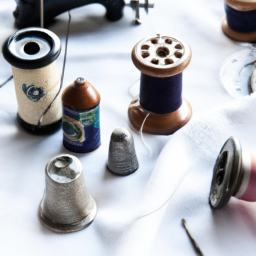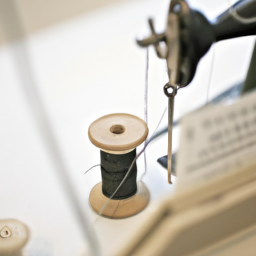
History of the First Sewing Machine

The invention of the sewing machine revolutionized the textile industry, making clothing production faster
and more efficient. Let’s take a journey back in time and uncover the fascinating history of the first sewing
machine.
The Birth of the First Sewing Machine
The first functional sewing machine was invented by French tailor Barthelemy Thimonnier in 1830. Thimonnier’s
machine used a hooked needle and a continuous thread that created a chain stitch, similar to hand-sewn darning
techniques.
Thimonnier’s machine was successful and garnered attention from both the public and the tailoring industry.
However, his invention faced significant resistance from traditional tailors who feared the loss of their jobs.
In 1841, a mob of French tailors destroyed his entire factory, denouncing his invention as a threat to their
livelihood.
Elias Howe’s Invention
In 1846, American inventor Elias Howe received a patent for his sewing machine, which used a lockstitch complete
with an automatic thread feed and a needle with an eye at the pointed end. This innovation laid the foundation
for most modern-day sewing machines.
Although Howe’s invention was revolutionary, it faced similar disdain and resistance from skilled artisans who
feared unemployment. Nonetheless, he managed to establish successful sewing machine production in the United
States and ultimately revolutionized the garment industry.
Sewing Machines Go Industrial
In 1851, Isaac Merritt Singer introduced the Singer Sewing Machine Company and brought sewing machines into the
homes of many households. Singer’s machine was not only practical but also relatively affordable for
individuals.
Singer’s company became one of the most successful sewing machine manufacturers in the world and played a vital
role in mechanizing the textile industry during the Industrial Revolution.
The Evolution Continues
Since the invention of the first sewing machine, countless advancements and innovations have shaped the modern
sewing industry. Today, electronic sewing machines offer a wide range of features, from programmable patterns to
automatic thread cutters.
Computerized sewing machines have further transformed the industry, allowing for intricate embroidery and
creative stitching techniques. Additionally, the development of overlock machines, sergers, and other
specialized sewing devices has expanded the capabilities of professional and home sewists alike.
Conclusion
The first sewing machine was a groundbreaking invention that changed the way clothes were manufactured. From
Thimonnier’s chain stitch machine to Howe’s lockstitch design and Singer’s household machines, each innovation
played a significant role in the progress of the sewing industry.
Today, sewing machines continue to evolve, and their impact on cloth production cannot be overstated. They have
empowered countless individuals with the ability to create, repair, and customize garments, contributing to both
personal satisfaction and economic growth.





Wow, this is an interesting topic! #history #sewing
This is such an impressive feat of engineering! It’s amazing to think of how far technology has come since the first sewing machine was invented! #history #sewing
Indeed! Technology is advancing so quickly these days #history #sewing
Absolutely jaw-dropping! I’d love to know more about the history of sewing machines #history #sewing